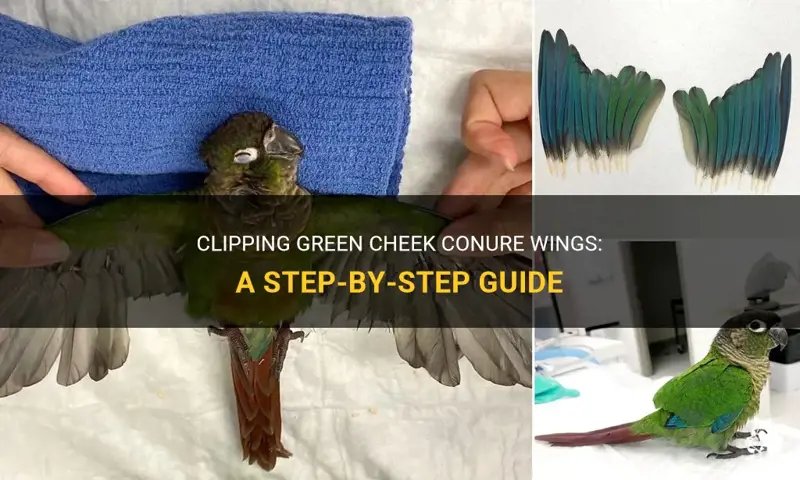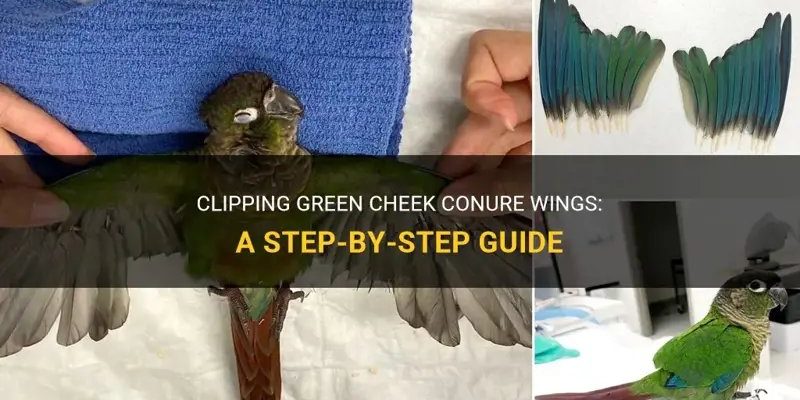
In this guide, we’ll dive deep into the ins and outs of wing clipping. We’ll discuss the reasons it might be done, the how-to of clipping, and even the alternatives. Think of this article as a conversation over coffee, where we explore your concerns and arm you with the knowledge to make an informed decision. So let’s get started!
Understanding Why Wing Clipping Might Be Necessary
You might be wondering why anyone would even consider clipping a conure’s wings. It’s not just about making them look cute in that short, stumpy way! The main reason is safety. Domestic birds, including conures, can encounter dangers they wouldn’t normally face in the wild. Whether it’s flying into a ceiling fan, escaping through an open window, or even getting too close to a pet cat, clipped wings can prevent accidents.
Another reason is to manage their behavior. Sometimes, a conure might become overly assertive or dominant—and giving them clipped wings can provide a bit of a reality check. It can create a calmer environment where they can’t zoom around the house out of control. But remember, these are temporary measures; the goal is to keep your conure safe and happy!
Preparing to Clip Your Conure’s Wings
Before you even think about grabbing a pair of scissors, it’s essential to prepare. First and foremost, gather your supplies. You’ll need a pair of sharp, bird-safe scissors or specialized wing clippers. Avoid regular scissors, as they can damage the feathers and hurt your bird.
Next, create a calm environment. This isn’t a quick snip and dash; your conure needs to feel safe. Consider having a few treats on hand to reward them afterward. You might also want to have a towel ready, just in case they get squirmy and need a gentle wrap to hold them securely while you work.
Finally, consult with your avian vet. They can provide tips specific to your bird and even show you the best techniques if it’s your first time. Trust me; it’s worth the investment to ensure you’re doing this safely.
How to Clip a Conure’s Wings: Step-by-Step
Alright, let’s get into the nitty-gritty of wing clipping. Here’s a step-by-step guide:
- Step 1: Hold Your Conure – Gently wrap your conure in a towel, leaving their head sticking out. This will keep them calm while you work.
- Step 2: Examine their Wings – Look at the feathers and locate the primary flight feathers. These are the long ones that help your bird soar.
- Step 3: Start Clipping – Carefully snip the primary feathers on one wing. Aim to cut just above the “blood feather,” which is a feather that hasn’t fully matured yet and contains blood supply.
- Step 4: Double-Check – Look at the other wing. It’s usually best to clip both wings in a similar manner for balance.
Remember, it’s crucial to keep your movements steady. If you’re feeling nervous, take a deep breath and take a moment before proceeding. It’s completely natural to feel a little apprehensive!
Aftercare: What to Expect
Once you’ve clipped your conure’s wings, their behavior might change a bit. You may notice they’re more cautious when moving around. This is perfectly normal! After clipping, give your conure some space to adjust. They’ll need a bit of time to learn how to navigate their environment in a new way.
Keep an eye on their mood, too. Some conures may feel a little grumpy after their wings are clipped. If you notice they’re more withdrawn, try to spend extra time engaging with them through playtime or training.
Just as you reward them with treats during clipping, continue to offer positive reinforcement afterward. A little bit of gentle encouragement can go a long way!
Alternatives to Wing Clipping
You might be thinking, “Is there another way?” Absolutely! Many owners and avian experts advocate for training methods that can help manage a bird’s flight without the need for clipping. Harness training is one effective alternative. With a specialized harness, your conure can fly freely while staying safe at the same time.
Another option is providing a safe flight space, like a large, protected area where they can stretch their wings without facing dangers. This could be a bird-proofed room or an outdoor aviary.
Additionally, consider working with an avian behaviorist who can help you address any flying-related issues without resorting to clipping. It not only enriches their environment but builds trust between you and your conure.
Is Wing Clipping Right for Every Conure?
Let’s face it: wing clipping isn’t a one-size-fits-all solution. Some owners choose not to clip at all, believing that it limits their bird’s natural behavior. Indeed, conures are known for being energetic and playful, so the idea of restricting their flight can be tough.
Consider your specific home circumstances. If you have young kids or pets that might pose a risk, clipping might make more sense for your situation. On the flip side, if you have a large space and can ensure a safe environment, allowing your conure to fly might be beneficial for their mental health.
Ultimately, it’s crucial to weigh the pros and cons. Listen to your intuition as a bird parent, and don’t hesitate to reach out to professionals for guidance.
So, how do you feel about the idea of clipping your conure’s wings? It’s a decision that requires a good deal of thought and care. While clipping can be a useful tool for safety and behavior management, it’s not the only option on the table. Always consider your conure’s specific needs, your living situation, and the alternatives available to you.
Whatever you decide, remember that your conure relies on you for their well-being. Trust your instincts, gather the right information, and you’ll make the best choice for both of you. After all, every bird deserves a happy, safe home!

